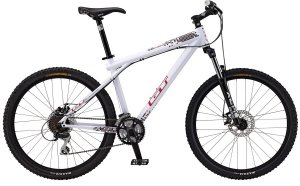
Downhill Mountain bike suspension
Forward suspension system is really what differentiates hill bikes from rest of the two-wheeled world. Because of it we are able to navigate rock-strewn tracks with certainty. Modern-day forks can be purchased in several sizes and shapes, and every a person is made for a particular riding design. Selecting a fork might intimidating in the beginning, nevertheless the feel of a bike with brand-new suspension system is a superb incentive.

Types
Hill bicycle forks are classified into four major categories: downhill, freeride, all-mountain and cross-country. The sort of damping system they normally use in addition differentiates forks; both air and coil sprung options are available. Air forks tend to be lighter, and generally more expensive, but coil sprung forks perform just as well with only a small weight penalty. Both provide a new experience and they are designed for all riding designs.
Downhill - they are twin crown forks with 8 inches of vacation designed specifically for shuttle and raise access riding. They provide rebound and compression corrections so bikers can tune their particular forks in accordance with the surface. They're most often discovered with 20mm through-axles, integrated stems, and 1 1/8-inch steerer pipes.
Freeride - Forks created for the rigors of big hill biking have actually oversized stanchions, around 8 ins of vacation, are often single crown, typically make use of 20mm axles, and possess comparable alterations to downhill forks in a far more nimble bundle. Lengthy vacation designs can use 1 1/2-inch or "tapered" steerer pipes, which need a-frame designed to take all of them. There are also light duty freeride forks designed for soil bouncing and road. Just 100-125mm of vacation, they've been much smaller and lighter but are nonetheless built for abusive biking.
All-Mountain - This range includes forks made to withstand aggressive trail riding, while maintaining the ability to climb efficiently. They typically range between 3 to 4 ins of vacation, and many designs can adjust the stroke size without an instrument. Remote lockouts are popular with this type of hand. They likewise have significant amounts of outside changes and technology to boost pedaling efficiency. 15 and 20mm through axles are the most typical.
Cross-Country - These forks have the the very least number of travel and therefore are also the lightest array of forks offered. Maintaining body weight reduced while enabling optimum pedaling efficiency could be the aim of high-end XC forks, while less costly designs stress value and smooth function. They usually are loaded with a lockout, rebound and compression corrections. Cross-country forks utilize 15mm and 9mm "quick launch" axles.
Sizes
Fork sizing depends on the steerer tube, the axle, together with measurements of the wheel.
Steerer Tube Diameter - the conventional steerer pipe size is 1 1/8-inches diameter. Oversized 1 1/2-inches and "tapered" steeer pipes which are 1 1/8-inches at the top and 1 1/2-inches on top are also typical.
Axle Diameter - Standard quick release dimensions are 9mm diameter.15mm through axles are found on all-mountain and cross-country forks. 20mm axles would be the standard for freeride, downhill and several all-mountain forks.
Wheel Size - Mountain bike wheels and forks can be purchased in 26-inch, 27.5-inch (also called 650b), and 29-inch options.
Products
Forks are made of a combination of materials. Lowers is created from magnesium or aluminum. Stanchions, crowns and steerer tubes are generally a>luminum or chromoly. Coil sprung forks use either metal or titanium springs.
YOU MIGHT ALSO LIKE



Share this Post
Related posts
Downhill Mountain bike Jerseys
From a riding perspective I basically love mountain biking! Any of that off road nobbly tyre stuff. That is where my passion…
Read MoreDownhill Mountain bikes sale
Philippines: Travel Guide, Tips and Latest News: Mountain Biking
Read More











